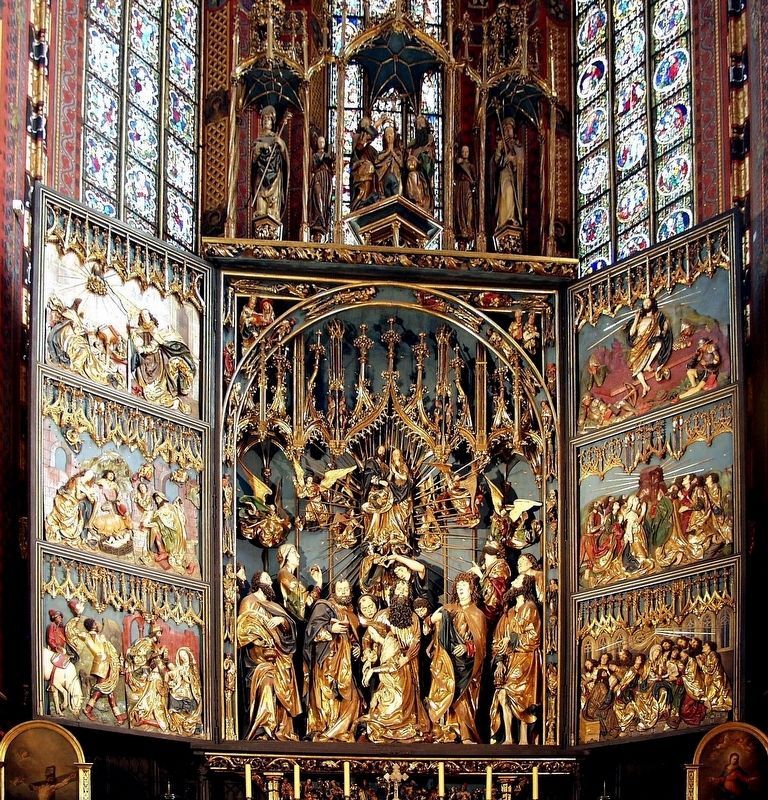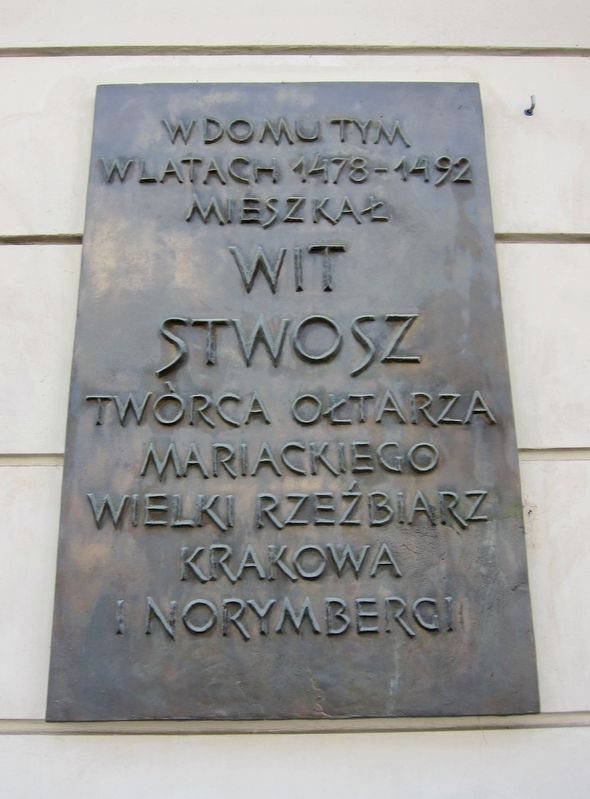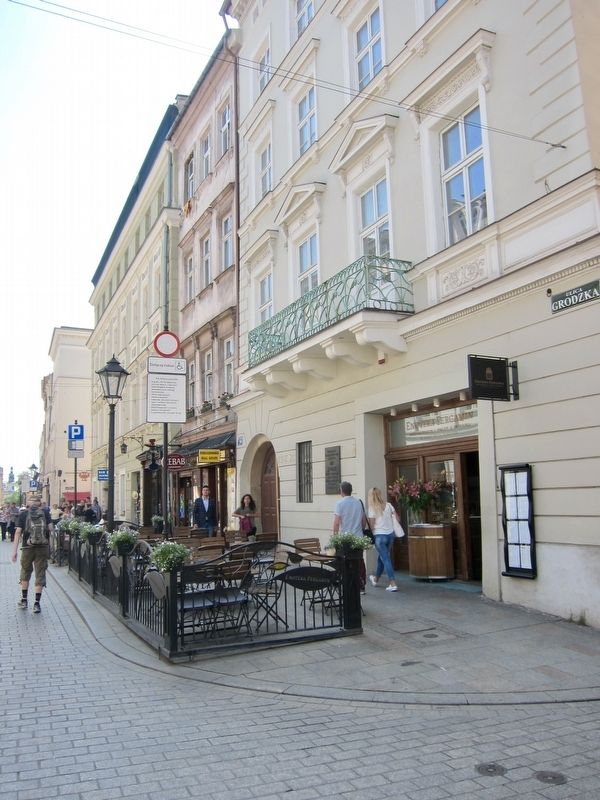Wit Stwosz
w latach 1478-1492
mieskał
Wit
Stwosz
twórca ołtarza
mariackiego
wielki rzeźbiarz
Krakowa
i Norymbergi
In this house during the years 1478-1492 lived Wit Stwosz (or Veit Stoss), creator of the Marian altarpiece, and great sculptor of Krakow and Nuremberg.
Topics. This historical marker is listed in this topic list: Arts, Letters, Music.
Location. 50° 3.481′ N, 19° 56.275′ E. Marker is in Kraków, Małopolska (Lesser Poland), in Kraków Powiat. Marker is on ul. Grodzka just south of Poselska, on the left when traveling north. Touch for map. Marker is at or near this postal address: Grodzka 39, Kraków, Małopolska 31-001, Poland. Touch for directions.
Other nearby markers. At least 8 other markers are within walking distance of this marker. Zdzisław Jachimecki (within shouting distance of this marker); Studencki Komitet Solidarności / Student Committee of Solidarity (within shouting distance of this marker); Collegium Broscianum (about 90 meters away, measured in a
Also see . . .
1. Veit Stoss (Wikipedia). Veit Stoss (also: Veit Stoß; Polish: Wit Stwosz; before 1450 – about 20 September 1533) was a leading German sculptor, mostly in wood, whose career covered the transition between the late Gothic and the Northern Renaissance. His style emphasized pathos and emotion, helped by his virtuoso carving of billowing drapery; it has been called "late Gothic Baroque". He had a large workshop and in addition to his own works there are a number by pupils. He is best known for the altarpiece in St. Mary's Basilica in Kraków, Poland. (Submitted on June 7, 2018.)
2. Veit Stoss altarpiece in Kraków (Wikipedia). (Submitted on June 7, 2018.)

Credits. This page was last revised on June 7, 2018. It was originally submitted on June 7, 2018, by Andrew Ruppenstein of Lamorinda, California. This page has been viewed 204 times since then and 22 times this year. Photos: 1, 2, 3. submitted on June 7, 2018, by Andrew Ruppenstein of Lamorinda, California.

